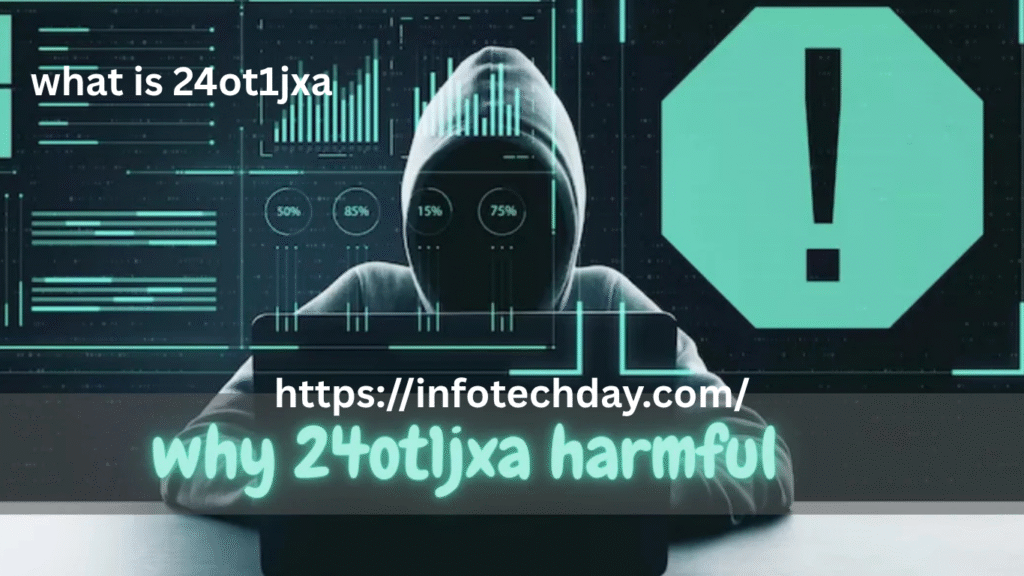Table of Contents
The digital evolution is on the boom with everyday innovations. Coding is also getting modern and new stuff has been made to smoothen the user experience for tech.
If you are wondering what is 24ot1jxa and how it can affect your working experience? Well, this is a most searched question nowadays and people are looking forward to this piece of a digital algorithm, or a unique identifier. You can scroll down to check what it is and what sort of benefits and harm it can give you.
What Is 24ot1jxa?

The term 24ot1jxa is not mainstream, yet its sudden emergence in forums, error messages, or perhaps even device-related warnings has created an interest.
A lot of users have complained about seeing it out of place, such as system files, debug logs, software activation processes, or obscure sections of website code.
Though it’s not formally listed in tech encyclopedias or recognized databases, the repetitive nature of this string suggests that it might be something greater than a random code. There are a couple of current theories regarding its purpose and origin.
Unique Identifier or Reference Code
One of the most likely possibilities is that 24ot1jxa is a unique identifier used by a specific system, app, or platform. In software engineering, such alphanumeric strings are used to tag user activity, label back-end processes, or even manage digital licenses. If you’ve come across this string while using a particular app or service, chances are it’s working behind the scenes to track operations.
Here, 24ot1jxa may play a significant functional role—never mind that users need to know nothing about it.
Obfuscated or Encrypted Code
A second reading is that 24ot1jxa is an obfuscated string—one that’s been made deliberately obscure to safeguard proprietary data or system security. Programmers commonly scramble sensitive data into codes that are readable only by the system itself.
So 24ot1jxa may be meaningful, but only if read by the appropriate software or decoded with the correct key.
System Glitch or Debug Artifact
Did you ever look at a crash dump or error log and notice a strange string? Occasionally, developers use testing placeholder values that never get changed. Sometimes, those values end up in the production release by accident. 24ot1jxa might be an artifact like that, appearing in a place where it shouldn’t be.
If you’ve stumbled upon it during regular system use, especially if it seems to trigger errors, it might just be a remnant of unfinished code.
Part of a Malware or Tracking Script?
In more dire instances, esoteric codes such as 24ot1jxa may be included in malicious code or tracking systems within third-party software or infected websites. Cybersecurity experts tend to scan for abnormal patterns or unusual activity to detect threats—and strings such as these may serve as indicators.
But there is no evidence at the moment linking 24ot1jxa to any malware or spyware. But if you see this alongside performance or unauthorized access issues, it’s worth digging deeper.
Placeholder in AI or Machine Learning Models
In some modern applications—especially those involving AI and machine learning—randomized strings are used as temporary placeholders, such as for labeling data clusters or training sets. 24ot1jxa might be an internal label automatically generated during such a process.
If you’re working with AI tools, data science platforms, or analytics dashboards, this could explain its presence.
Is 24ot1jxa Powerful?
The strength of 24ot1jxa is not in how it looks, but in what it stands for. It represents the unseen layers of digital technology that keep our apps, software, and systems in working order—occasionally glitching in a fit of malfunctions. It is a testament to just how much of today’s tech is fueled by things that most of us never see or fully comprehend.
Whether it’s an helpful identifier, a programmer’s internal debugging tag, or something still more complex, 24ot1jxa is part of the unseen infrastructure of the digital world.
What Should You Do If You Encounter 24ot1jxa?
Don’t panic – It’s probably not going to be harmful unless accompanied by other warning signals.
Check the context – Where did it show up? In a system file, on a web site, or an app?
Run a scan – In case, it cropped up suddenly, run malware or antivirus scans.
Monitor your system – Observe for slowdowns, error messages, or unusual behavior.
Bottom Line
The digital world is full of mysteries—some dangerous, some benign, and some simply intriguing. 24ot1jxa may never become a household name, but it reflects the growing curiosity people have for understanding how the systems around them work.
No matter if you are a developer, tech enthusiast, or just someone who stumbled what Is 24ot1jxa across this code, make sure to have a deeper awareness about this tech bit.
